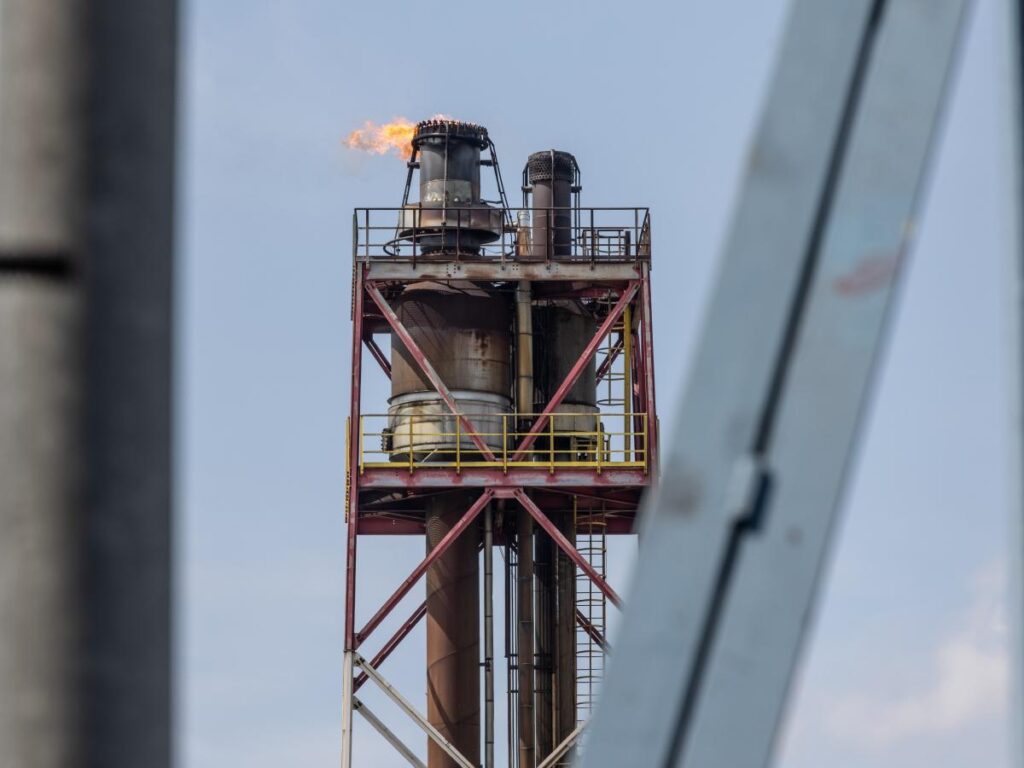franckreporter
Listen below or on the go on Apple Podcasts and Spotify
The Nasdaq is up 30% and the Dow trails badly, up 14%. (0:34) Housing and manufacturing data dominate short week. (1:57) South Korea plane crash kills 179. (3:07)
The following is an abridged transcript:
It’s another holiday-shortened week for Wall Street, with markets shut on Wednesday, January 1.
But Tuesday, December 31 the stock market closing bell rings at 4 p.m. ET as normal as it’s the last trading day of the year. The bond market will close early at 2 p.m. on New Year’s Eve.
Going into the final two trading days of the year, here’s where the major averages stand year to date:
The S&P 500 (SP500) is up 25%. The Nasdaq Composite (COMP.IND) is up 31% and the Dow (DJI) is the big laggard, but still up 14%.
Quasar Elizundia. research strategist at Pepperstone, says “the strong annual performance of major indices …demonstrates the market’s resilience throughout the year.”
“While the current environment generates some caution, it is important to frame it within a year of strong gains. The key will be companies’ ability to maintain profitability in a higher rate environment and the evolution of macroeconomic data guiding future Fed decisions.”
Looking to other asset classes, spot gold (XAUUSD:CUR) is up 27%, WTI crude (CL1:COM) is down 1.5%, natgas (NG1:COM) is up 36%, copper (HG1:COM) is up 5% and bitcoin (BTC-USD) is up 112% (although that doesn’t even crack the top 3 for the crypto’s best annual returns).
The 10-year Treasury yield (US10Y) is up 77 basis points, which means the price is down about 20%.
“The continued rise in bond yields, driven by the reassessment of less restrictive monetary policy expectations, creates some concern” Elizundia added. “This movement suggests the market is absorbing and processing the notion that the Federal Reserve may maintain a more aggressive stance against inflation than previously anticipated. As a result, equities face a new scenario where the cost of capital may not decrease as much as previously desired, pressuring valuations.”
There are no major earnings on the calendar for the week. But there will be insight into U.S. manufacturing and the housing market.
On Monday, the December Chicago PMI is due. The consensus is for a rise to 42.7. Pending home sales figures for November hit the same day with a 0.9% rise expected.
Tuesday brings the S&P Case-Shiller Home Price Index, seen rising 4.2%.
Along with the usual jobless claims figures, Thursday has the final measure of the December S&P Global PMI and November construction spending, seen up 0.25%.
Friday wraps things up with the December ISM manufacturing index, seen edging down to 48.5.
Due to the holiday the December jobs report won’t be out until the 10th of the month.
Steve Englander, strategist at Standard Chartered, says the “question is how much weakness is needed in December labor data to justify a January FOMC cut. By our reckoning, a higher unemployment rate or nonfarm payrolls growth of 125k or less should be enough. We see these outcomes as sufficiently likely to justify a January cut.”
The market is pricing just an 11% chance the FOMC lowers by a quarter point on January 29.
In the news this weekend, a Boeing (BA) 737-800 jetliner operated by a South Korean budget airline skidded off the runway and exploded after hitting a concrete wall at an airport Sunday morning in the country’s southwest, killing 179 people onboard.
Two people have survived, according to local authorities.
Jeju Air Flight 2216 went off the runway as it landed at Muan International Airport. The aircraft’s landing gear wasn’t deployed. According to media reports, the pilot made a mayday call minutes after the airport’s control tower warned birds were in the area.
The flight originated in Bangkok, and all but two passengers were South Korean. The remaining two were Thai nationals.
And more than half of the U.S. is at increased risk of power supply shortfalls in the next 5-10 years that could lead to outages and electricity conservation measures, the North American Electric Reliability Corporation said in a recent report.
As U.S. power consumption rises from data centers and the electrification of buildings and transportation, efforts to add electricity generation have fallen short, creating a rising imbalance between supply and demand, NERC said in its annual Long-Term Reliability Assessment.
The Midcontinent Independent System Operator, which operates the electrical grid in 15 states, was at high risk of shortfalls even at normal peak demand periods, NERC said, while other grid operators including PJM Interconnection, ISO New England, and operators in Texas and California are at elevated risk in which shortfalls may happen during extreme heat or cold.
For income investors, Deere (DE) and Mondelez (MDLZ) go ex-dividend on Tuesday. Deere has a payout date of February 10 and Mondelez pays out January 14.
And Cisco (CSCO) and American Express (AXP). go ex-dividend on January 3. Cisco is paying out on January 22 and AmEx pays out on February 10.
And in the Wall Street Research Corner, Wedbush says Palantir (PLTR) and Salesforce (CRM) appear well positioned to take the lead among software firms in monetizing artificial intelligence applications headed into 2025.
AI spending among enterprises is expected to take up a larger share of IT budgets in 2025.
Analyst Dan Ives says: “Palantir has been a major focus during the AI Revolution with expanding use cases for its marquee products leading to a larger partner ecosystem with rapidly rising demand across the landscape for enterprise-scale and enterprise-ready generative AI.”
“We believe Palantir has a credible path to morph into the next Oracle (ORCL) over the coming decade, with AIP leading the way as many on the Street continue to be huge skeptics of the Messi of AI.”
















